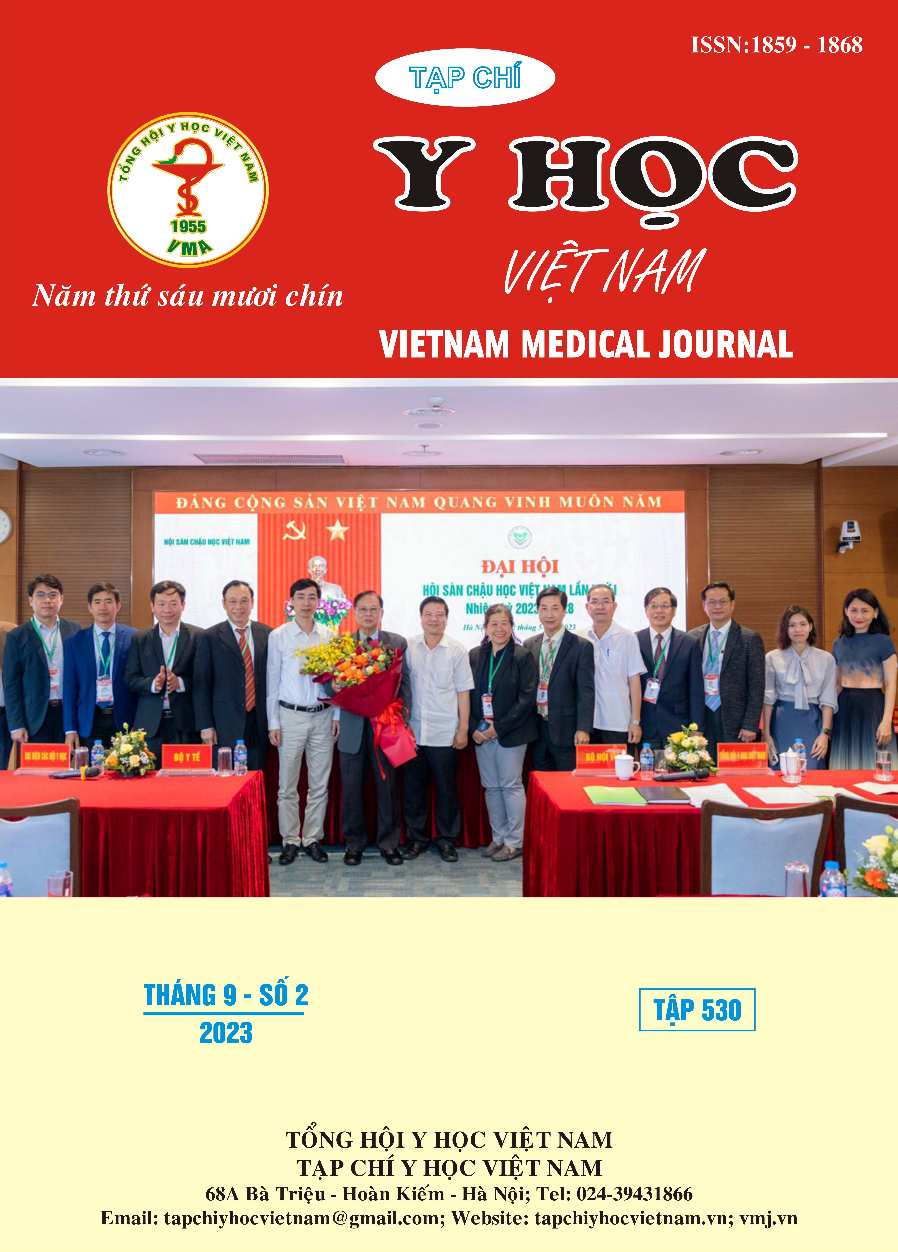THE ASSESSMENT OF THE RESULTS OF SURGICAL TREATMENT IN BRAIN’S HEMORRHAGIC STROKE
Main Article Content
Abstract
Objective: To evaluate the results of surgical treatment of spontaneous cerebral hemorrhage at the neurosurgery department of Thong Nhat hospital from 2020 to 2022. Subjects and methods: A retrospective descriptive 40 cases on patients diagnosed with spontaneous cerebral hemorrhage who underwent surgery at the neurosurgery department of Thong Nhat hospital from 1/2020 to 1/2022. Results: The time from symptom onset to hospital admission is about 4 hours on average, with most cases in the 3-6 hour group (60%). There was a relationship between the severity of the patient's severity as assessed by GCS and the time of admission (p<0.05). There were 5 cases of EVD occlusion after surgery, 3 cases of infection with CSF inoculated with Staphyllococcus Aureus, on average after 5 days, the CSF was drained regularly 150-200ml, antibiotic time for all 3 All shifts are 21 days. The average length of hospital stay was 20 days, with most cases about 17 days (58%). GOS accounted for mainly 3, the rest was 4, no case was recorded 5 points. Conclusion: The role of surgery in spontaneous intracerebral hemorrhage mainly helps to reduce mortality but has not seen improvement in the degree of recovery. Consideration should be given to the use of minimally invasive methods that open new directions when returning patients to normal life.
Article Details
Keywords
cerebral hemorrhage.
References
2. Dammann, Philipp, et al. (2011), "Spontaneous cerebellar hemorrhage—experience with 57 surgically treated patients and review of the literature", Neurosurgical review. 34(1), pp. 77-86.
3. Gaberel, Thomas, Magheru, Christian, and Emery, Evelyne (2012), "Management of non-traumatic intraventricular hemorrhage", Neurosurgical review. 35(4), pp. 485-495.
4. Kirollos, Ramez W, et al. (2001), "Management of spontaneous cerebellar hematomas: a prospective treatment protocol", Neurosurgery. 49(6), pp. 1378-1387.
5. Kuo, Lu-Ting, et al. (2011), "Early endoscope-assisted hematoma evacuation in patients with supratentorial intracerebral hemorrhage: case selection, surgical technique, and long-term results", Neurosurgical focus. 30(4), p. E9.
6. Miller, Chad M, et al. (2008), "Image-guided endoscopic evacuation of spontaneous intracerebral hemorrhage", Surgical neurology. 69(5), pp. 441-446.
7. Naff, Neal J, et al. (2004), "Intraventricular thrombolysis speeds blood clot resolution: results of a pilot, prospective, randomized, double-blind, controlled trial", Neurosurgery. 54(3), pp. 577-584.
8. Naff, Neal, et al. (2011), "Low-dose recombinant tissue-type plasminogen activator enhances clot resolution in brain hemorrhage: the intraventricular hemorrhage thrombolysis trial", Stroke. 42(11), pp. 3009-3016.
9. Pian, Renato Da, Bazzan, Alberto, and Pasqualin, Alberto (1984), "Surgical versus medical treatment of spontaneous posterior fossa haematomas: a cooperative study on 205 cases", Neurological research. 6(3), pp. 145-151.
10. Webb, Alastair JS, et al. (2012), "Resolution of intraventricular hemorrhage varies by ventricular region and dose of intraventricular thrombolytic: the Clot Lysis: Evaluating Accelerated Resolution of IVH (CLEAR IVH) program", Stroke. 43(6), pp. 1666-1668.


